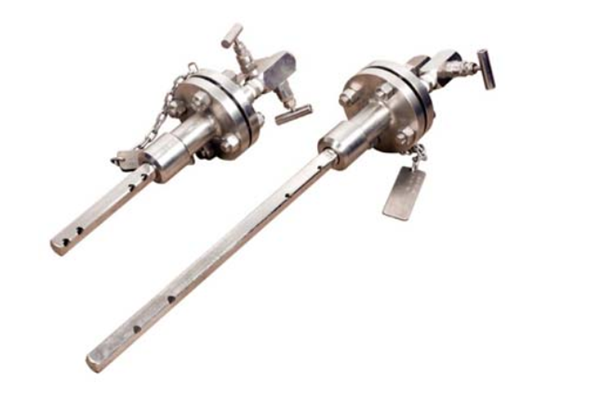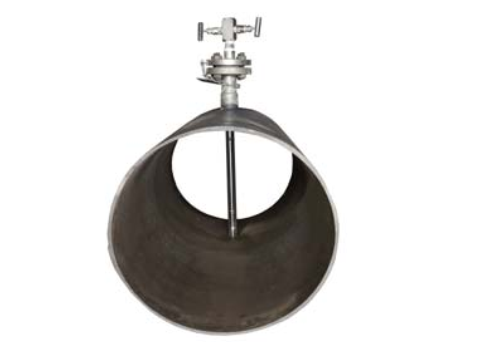1300 737 976
Call us
Live Chat
Call us
A primary flow element is a device inserted into the flowing fluid that produces a physical property that can be accurately related to flow. For example, an orifice plate produces a pressure drop that is a function of the square of the volume rate of flow through the orifice. A vortex meter primary flow element produces a series of oscillations of pressure. Generally, the physical property generated by the primary flow element is more convenient to measure than the flow itself. The properties of the primary flow element, and the fidelity of the practical installation to the assumptions made in calibration, are critical factors in the accuracy of the flow measurement.
Today we are going to be looking at the Averaging Pitot Tube (APT)

The PH is produced by impact or stagnation of the moving fluid on the sensor. The velocity profile results in a corresponding stagnation pressure profile. Multiple sensing ports, located on the front of the sensor, sense the impact pressure profile. Inside the high-pressure chamber, the average velocity pressure is maintained by the proportionality of the sensing port diameters to the chamber cross-sectional area. This assures less dependence on the magnitude of flow or Reynolds Number.

Averaging Pitot tube comprises of following components:
• Outer impact tube – one piece construction
• Internal averaging tube
• Low pressure chamber
• Head
The outer impact tube has a number of pressure sensing holes facing upstream which are positioned at equal annular points in accordance with a log linear distribution. The total pressures developed at each upstream hole by the impact of the flowing medium are firstly averaged within the outer impact tube and then to a second order (and more accurately) averaged within the internal averaging tube. This pressure is represented at the head as the high-pressure component of the DP output. The low-pressure component is generated from a single sensing hole located on the downstream side of the outer impact tube. Stable flow coefficient which is the result of typical diamond shape makes it a reliable flow measuring primary flow element. The diamond shape establishes a fixed separation point of the fluid from the sensor. The fixed separation point reduces changes in the low, (or reference pressure), that would cause a corresponding loss of accuracy in flow measurement. Experimental Station show conclusively that the Diamond design improves performance and range-ability compared to traditional DP devices.
APT PRIMARY FLOW ELEMENT VS. ORIFICE
Any drift in the flow coefficient (K) results in reduced accuracy. A 10% shift in the K factor results in 0% error in flow reading. The orifice long–term accuracy is significantly affected by warping, wear, and dirt or grease build-up. APT vs. Orifice Installation Costs On an 8-inch (203 mm) pipe, an APT Primary flow element requires only 4 linear inches (101 mm) of welding. An orifice plate installed in the same pipe requires 50 linear inches (1270 mm) of welding. APT primary flow elements reduced welding requirement saves over ten installation man-hours.
INSTALLATION:
The piping requirements for a ±3% accuracy installation will vary based on the piping configuration ahead of the elbow. The upstream straight-run requirements (L1) and the downstream diameters (L2) are in terms of pipe inside diameters (D). Requirements for Successful Installation
• The elbow must have a short radius and be welded or flanged rather than threaded.
• Straight lengths on upstream & downstream side of pitot tube shall be maintained.
• Mount the APT two pipe inside diameters from the center of upstream pipe, and in-plane with the elbow. Either inside or outside radius mounting will work, but the outside radius is preferred, as this allows the higher velocity vectors to be at the support point.
ADVANTAGES:
ENERGY SAVINGS The non-constricting design of the APT diamond-shaped sensor produces the lowest permanent pressure loss of all primary flow sensors. The non-constricting design also results in significant power savings. An orifice plate typically consumes more than 100 times the energy of an APT.
OPERATING COST SAVINGS Compare the orifice and APT operating costs. APT primary flow element is 100 times more efficient and can offer energy savings
DESIGNED-IN ACCURACY The diamond shape establishes a fixed separation point of the fluid from the sensor. The fixed separation point reduces changes in the low, or reference pressure that would cause a corresponding loss of accuracy in flow measurement. Round sensors have a variable separation point causing an unpredictable reference pressure, and can result in flow measurement errors as high as 10%.
LONG–TERM ACCURACY After performing extensive independent flow laboratory tests in a wide range of pipe sizes and fluids that consistently demonstrates APT primary flow element’s superior ability to repeat and maintain its flow coefficient.
ENERGY COST SAVINGS The non-constricting design of APT primary flow element’s diamond-shaped sensor produces the lowest permanent pressure loss of all primary flow sensors. The low permanent pressure loss results in significant power savings.
INSTALLATION COST SAVINGS
Compared to any other primary flow element, APT primary flow element has the lowest installation cost. Savings range from 25% on smaller pipes to 70% on larger pipes.
NO SYSTEM SHUTDOWN APT primary flow element is perfectly suited to retrofit applications because the retractable models can be hot–tapped without interruption of the flow— that is, without system shutdown.
STRAIGHT RUN REQUIREMENTS Use of recommended straight pipe lengths of uniform diameter upstream and downstream ensures that flow measurement will be made in flow with fully developed characteristics. The following chart describes the minimum number of pipe diameters upstream and downstream of the APT. Longer lengths are always preferred (if available) for accurate flow measurement.
Pyrosales has extensive knowledge and experience in temperature management and flow/pressure measurement. We provide advice, design, repair, and fabrication to our clients on a wide range of industries, uses, and capabilities of temperature management.
Copyright © 2022 Created by Pepper Digital
Disclaimer – Images for illustrative purposes only and may not be representative of the actual resolution of the camera shown.